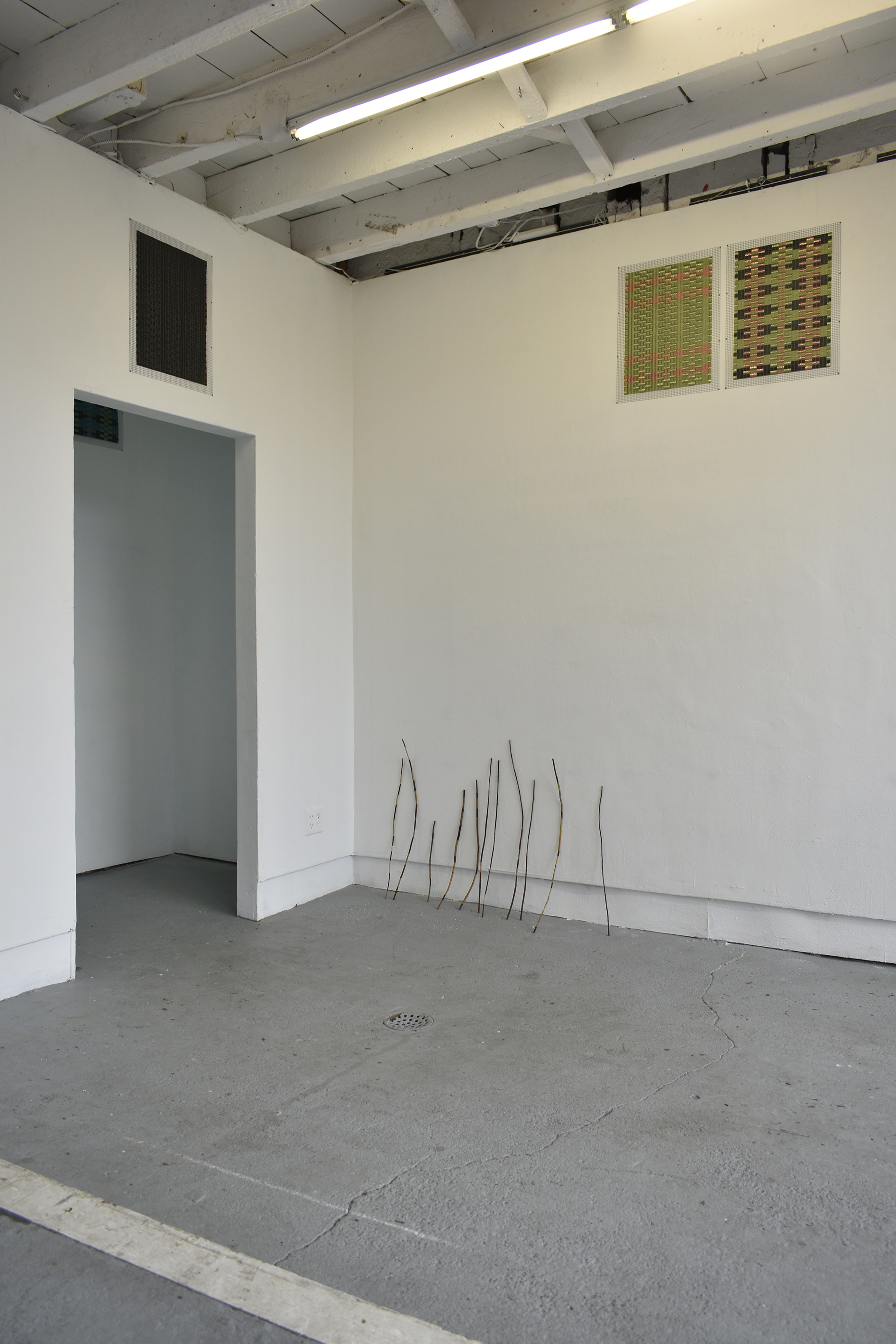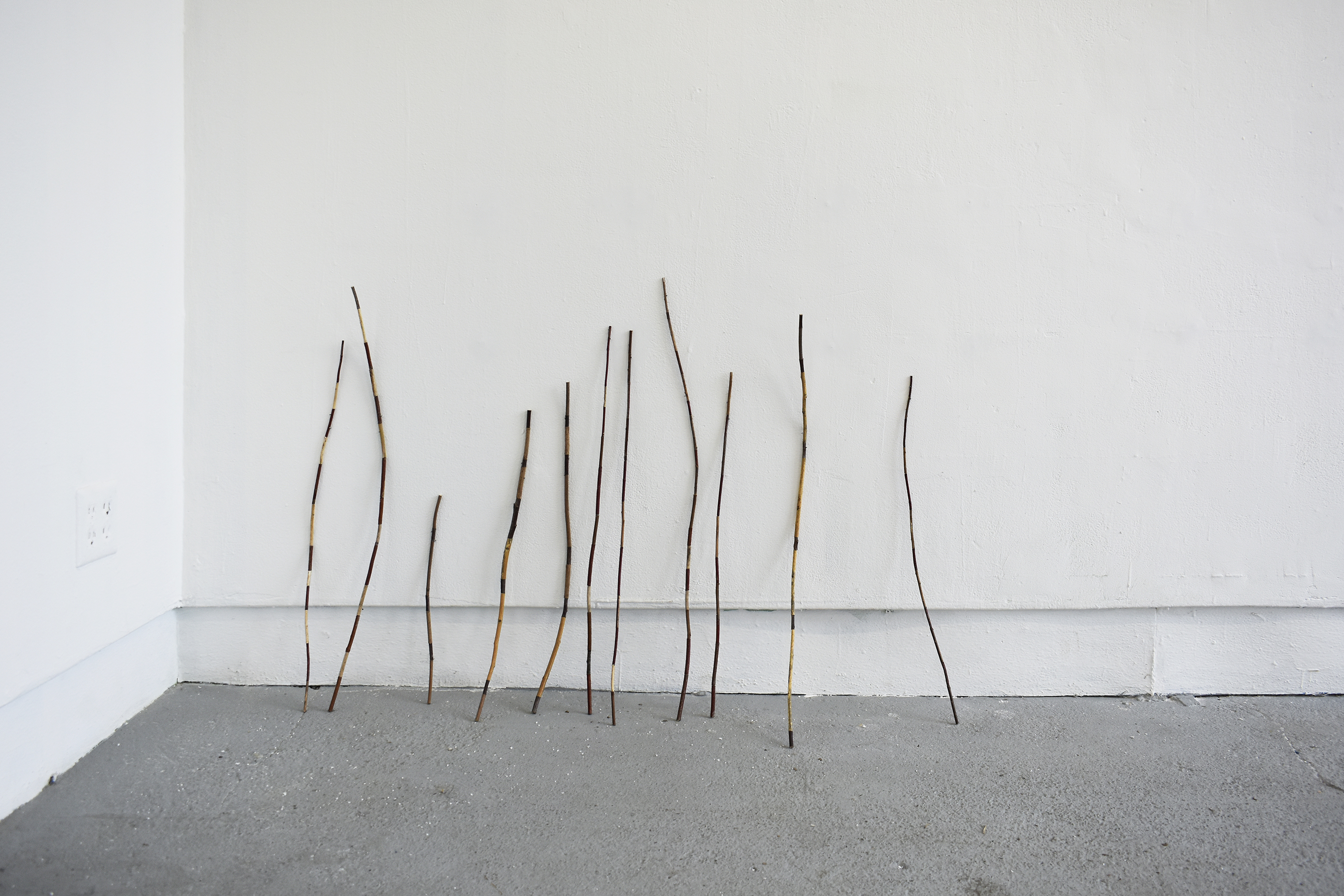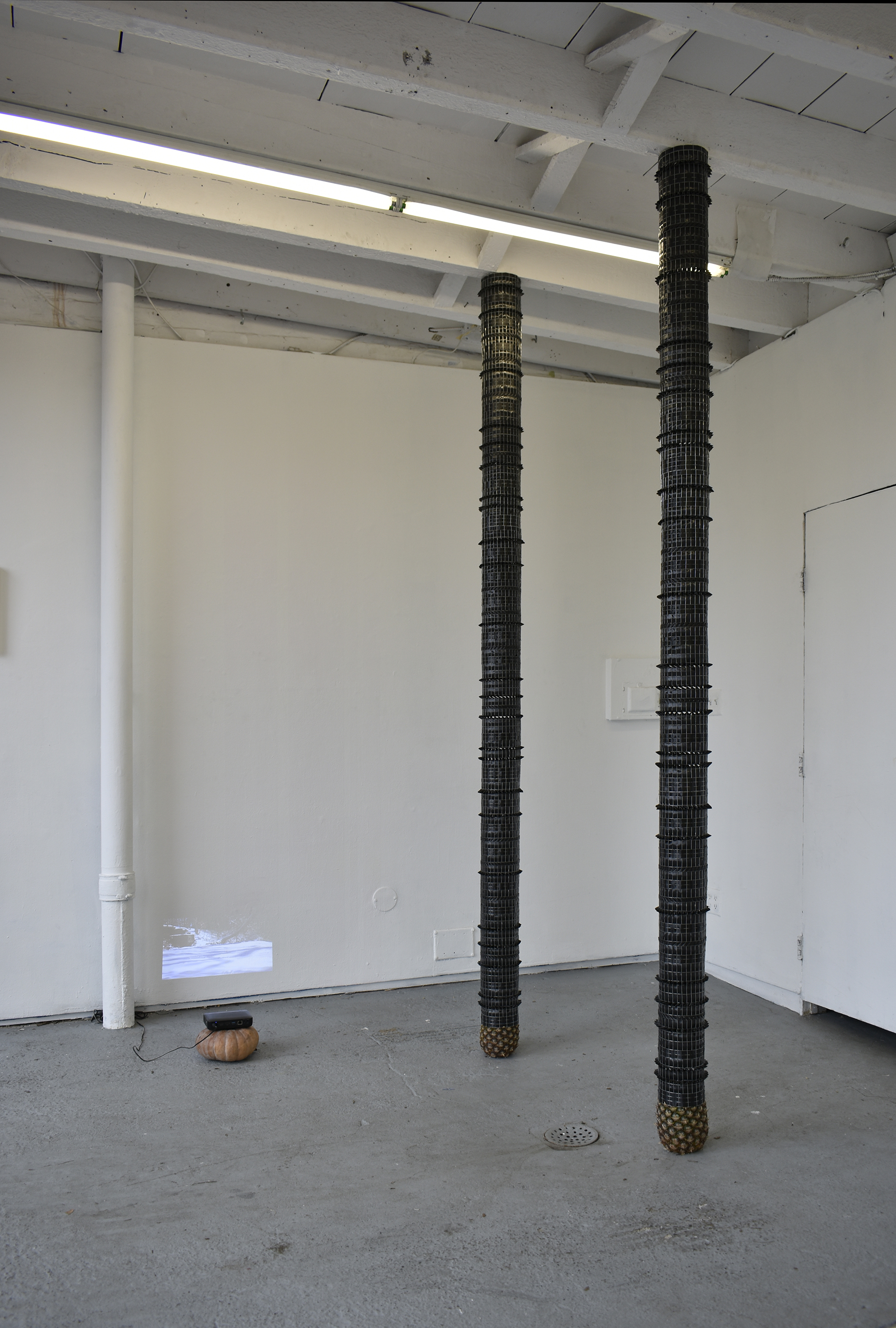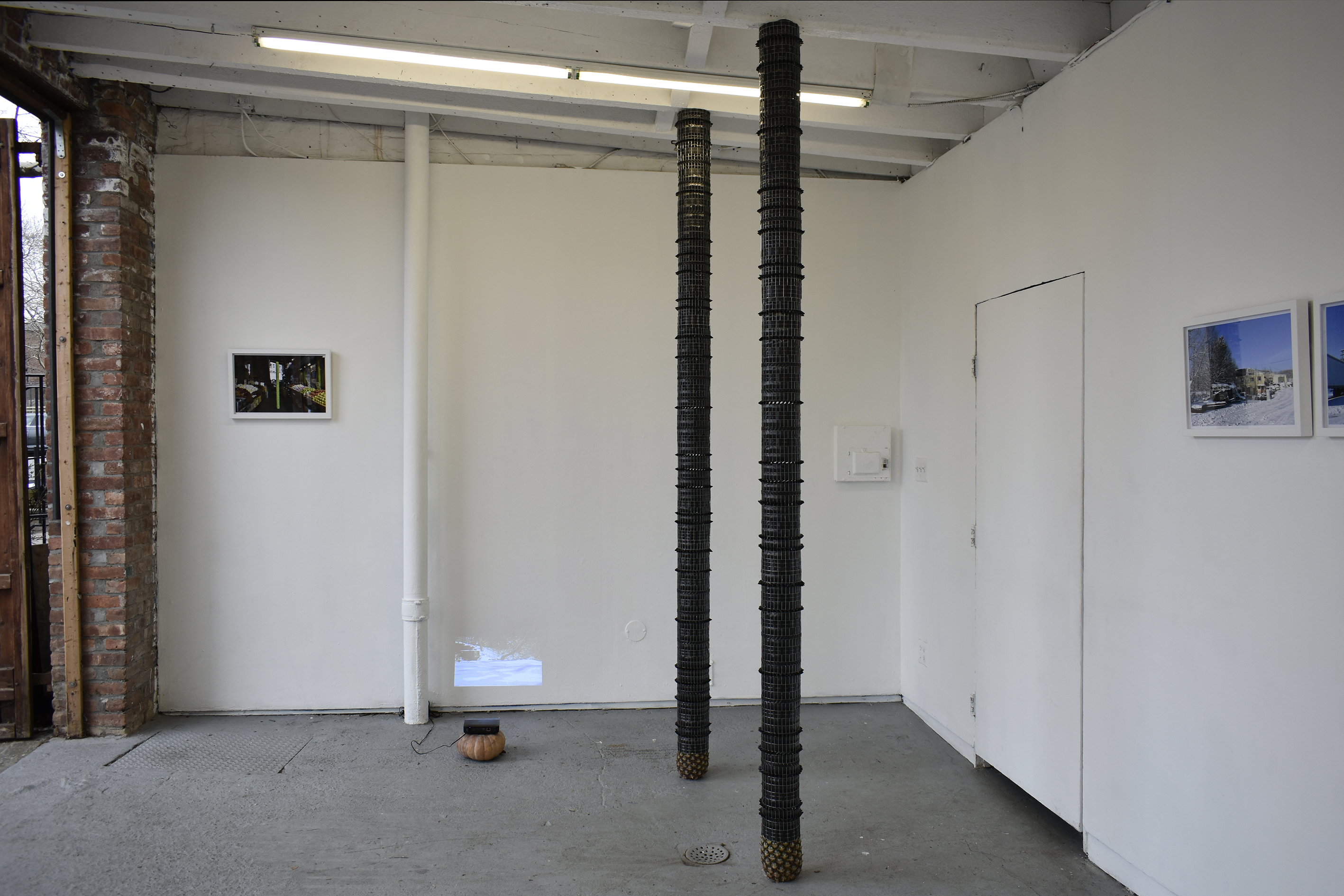Con su abrigo color marengo, ni plomo ni negro
Exposicion individual | Solo show
Open Source Gallery, Brooklyn NY
18 de marzo - 10 de abril, 2022 | March 18 - April 10, 2022
Extracto comunicado de prensa: “La poeta Gabriela Mistral recibe el premio Nobel en el año 1945. Muere en el año 1957 en Nueva York y sus funerales se realizan en Chile. En ambas ceremonias vistió el mismo abrigo color Marengo, ese que no es plomo ni negro.
En Con su abrigo color Marengo, ni plomo ni negro, Fabiola Burgos utiliza materiales como la cinta de regalo y la malla de acero, las obras se convierten en una renovada forma de producción textil, ya que se distancian de la larga tradición de protección y extensión corporal. Estos textiles no son cálidos y acogedores, están hechos para ser lo que son, superficies susceptibles a los cambios de luz, texturas que uno siente con los ojos, colores y patrones que contienen historia y al mismo tiempo la insinuación de un futuro posible. Es así como los textiles de Burgos son un vehículo para comunicar diferentes formas de articular un mismo medio.
Las torres cilíndricas son un instrumento de medición del espacio de exhibición, y a la vez estas se expanden a lo público. Las obras modulares de Burgos crecen exponencialmente, interactuando y dialogando con su entorno de diferentes maneras, desde lo sutil a lo monumental, de lo estático a lo dinámico. Estas torres activan el espacio convirtiéndose en marcas, tótems y líneas de color que juegan contra el (des)orden de lo rural y lo urbano.
Por su parte lo tejidos planos de Burgos que contienen variaciones de un mismo diseño dan cuenta de un espacio organizado y contenido. Sus diseños apuntan hacia la historia de los textiles, llevándonos desde un espacio de brillos y saturación a otro de negro sobre negro. Finalmente, las ramas de árboles caídos organizados de otra manera constituyen un espacio de libertad a tanta matemática
Press release excerpt: “Poet Gabriela Mistral received the Nobel Prize in 1945. She died in 1957 in New York and her funeral was held in Chile. In both ceremonies, she wore the same Marengo coat, the one that was neither gray nor black.
In Con su abrigo color Marengo, ni plomo ni negro, Fabiola Burgos uses materials such as gift tape and wire mesh to create woven works that respond to the space of the gallery. The materials become a renewed method of textile production, while simultaneously distancing themselves from the long tradition of bodily protection and extension. These textiles are not warm and cozy, they are crafted to be what they are: surfaces open to the changes of light, textures that one feels with the eyes, colors and patterns that simultaneously content history and hint toward a different kind of future. Burgos’s textiles are a vehicle to communicate different ways of articulating the same medium.
Cylindrical towers are an instrument for measuring the exhibition space, while also expanding it. Burgos’s modular works grow exponentially, interacting and dialoguing with their environment in different ways, from the subtle to the monumental, the static to the dynamic. These towers activate the space by becoming marks, totems, and lines of color that play against the (dis)order of the rural and urban. Meanwhile, Burgos’s flat fabrics contain variations of the same design, accounting for organized and contained space, pointing toward the history of textiles taking us from a space of brightness and saturation to one of black on black. Finally, branches of fallen trees that are almost seamlessly reconstructed soaring to create a space of freedom in contrast to the weight of mathematics.”






















